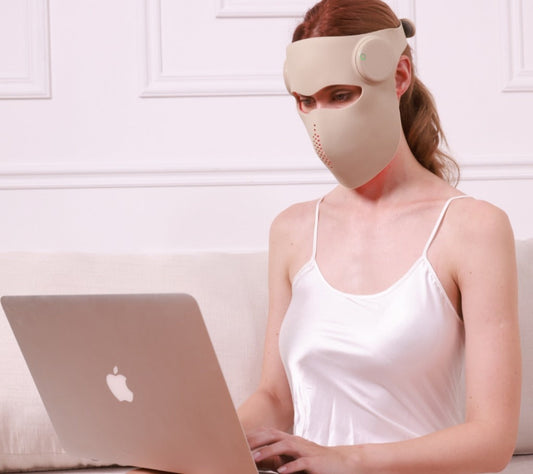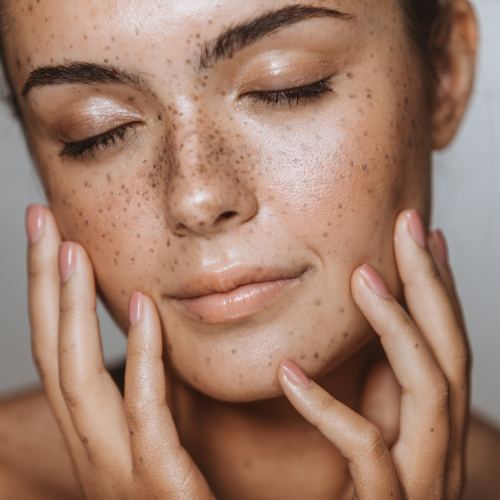
Debunking Light Therapy Myths: What’s Fact and What’s Fiction?
Share
In the world of skincare and wellness, LED light therapy has captured widespread attention. But with popularity comes misconceptions. Let’s shed light on some common myths and separate fact from fiction
Myth 1: Light Therapy Damages the Skin
Fiction: Some worry that LED light therapy can harm the skin, much like UV rays.
Fact: LED light therapy operates at safe wavelengths that do not damage skin cells. Unlike UV light, which can cause burns and increase the risk of skin cancer, LED light therapy is non-invasive and clinically proven to be safe for regular use. Devices are designed to emit controlled light intensities, ensuring safety even with prolonged use.
Myth 2: Light Therapy Only Targets Wrinkles
Fiction: Many believe light therapy is solely an anti-aging tool for reducing wrinkles.
Fact: LED light therapy delivers a wide range of benefits beyond anti-aging. For example:
- Accelerates Healing: Promotes faster recovery of wounds, scars, and damaged tissues.
- Supports Cellular Regeneration: Boosts energy production in cells, aiding renewal and repair.
- Reduces Inflammation: Helps soothe irritated skin and reduce swelling.
- Balances Skin Tone: Diminishes redness, discoloration, and uneven patches.
- Improves Hydration: Enhances moisture retention for healthier, more radiant skin.
Myth 3: Results Are Instant
Fiction: Some people expect dramatic results after just one session.
Fact: LED light therapy works by stimulating natural cellular processes, which take time to show visible improvements. While some benefits, like reduced redness, may appear quickly, long-term results such as wrinkle reduction or acne improvement require consistent use over weeks or months..
Myth 4: All LED Masks Are the Same
Fiction: It’s assumed that all LED masks provide the same benefits.
Fact: The quality of an LED mask significantly impacts its effectiveness. Factors like the number of LEDs, wavelength accuracy, and irradiance levels determine how well the mask delivers results. High-quality masks are designed with precise specifications to ensure optimal skin penetration and safety.
Myth 5: Red Light Therapy Can Cause Sunburn
Fiction: Sunburn can be caused by Red Light Therapy
Fact: Sunburns are caused by ultraviolet (UV) light, which has a much shorter wavelength than red and near-infrared light used in red light therapy. Red light therapy does not emit UV rays and, therefore, cannot cause sunburn. In fact, red and near-infrared light can help repair UV-induced damage to the skin by promoting cellular regeneration and reducing inflammation. This makes red light therapy a safe and beneficial treatment option for improving skin health without the risk of sunburn.
Myth 6: LED therapy can damage your eyes
Fiction: It’s unsafe to Stare Directly Into the LEDs During Red Light Therapy
Fact: While light therapy is generally safe for the eyes, it is not recommended to stare directly into the LEDs, especially at close range. Prolonged exposure to bright lights can temporarily affect colour perception and vision. Although some studies suggest that red light therapy can benefit eye health, it should be performed under the guidance of a healthcare professional or with specialized devices designed for eye treatments. For most skin or pain treatments, it’s advisable to close your eyes or wear protective eyewear to avoid discomfort or potential eye strain.
Myth 7: Light Therapy Doesn’t Really Work
Fiction: Some skeptics dismiss light therapy as a trend with no real impact.
Fact: Numerous clinical studies validate the effectiveness of LED light therapy in improving skin health. For example, red light stimulates collagen production, while blue light reduces acne-causing bacteria. These findings are backed by dermatological research and user testimonials.
Sources:
- Seminars in Cutaneous Medicine and Surgery: “Low-level laser (light) therapy (LLLT) in skin: stimulating, healing, restoring.”
- Journal of Biophotonics: “Photobiomodulation in human muscle tissue: an advantage in sports performance?,” “Safety of light emitting diode-red light on human skin: Two randomized controlled trials”
- Healthy Aging Research: “The role of near-infrared light-emitting diodes in aging adults related to inflammation”
- AIMS Biophysics: “Mechanisms and applications of the anti-inflammatory effects of photobiomodulation”
- Cleveland Clinic: “Red Light Therapy,” “LED Light Therapy,” “Body Contouring,” “Dermatologists”
- NASA Science: “Infrared Waves”
- Journal of Clinical and Aesthetic Dermatology: “Light-emitting Diodes,” “Efficacy and Tolerability of a Combined 445nm and 630nm Over-the-counter Light Therapy Mask with and without Topical Salicylic Acid versus Topical Benzoyl Peroxide for the Treatment of Mild-to-moderate Acne Vulgaris”
- Journal of Cosmetic Dermatology: “Synergistic effects of using novel home-use 660- and 850-nm light-emitting diode mask in combination with hyaluronic acid ampoule on photoaged Asian skin: A prospective, controlled study”
- Journal of Alzheimer’s Disease: “Photobiomodulation Therapy for Dementia: A Systematic Review of Pre-Clinical and Clinical Studies”
- Photomedicine and Laser Surgery: “Significant Improvement in Cognition in Mild to Moderately Severe Dementia Cases Treated with Transcranial Plus Intranasal Photobiomodulation: Case Series Report”
- Healthcare: “Efficacy of Photobiomodulation Therapy in the Treatment of Pain and Inflammation: A Literature Review”
- Pain Research and Treatment: “Efficacy of the LED Red Light Therapy in the Treatment of Temporomandibular Disorders: Double Blind Randomized Controlled Trial.”
- Cochrane Database of Systematic Reviews: “Low level laser therapy (Classes I, II and III) for treating rheumatoid arthritis”
- Osteoarthritis and Cartilage: “Effectiveness of low-level laser therapy in patients with knee osteoarthritis: a systematic review and meta-analysis”
- BMC Sports Science, Medicine and Rehabilitation: “The effect of low-level red and near-infrared photobiomodulation on pain and function in tendinopathy: a systematic review and meta-analysis of randomized control trials”
- Journal of Dermatological Treatment: “Meta-analysis of photobiomodulation for the treatment of androgenetic alopecia”
- Lasers in Surgery and Medicine: “Low-level laser therapy as a treatment for androgenetic alopecia”
- Current Problems in Dermatology: “Skin Tightening”
- Clinical, Cosmetic and Investigative Dermatology: “The Anti-Acne Effect of Near-Infrared Low-Level Laser Therapy”
- American Journal of Clinical Dermatology: “The Use of Lasers and Light Devices in Acne Management: An Update”
- British Association of Dermatologists: “Laser and other light therapies for the treatment of acne vulgaris: systematic review”
- U.S. Food & Drug Administration: “Non-Invasive Body Contouring Technologies,” “510(k) Clearances”
- Harvard Health: “LED lights: Are they a cure for your skin woes?,” “Medical Dictionary of Health Terms: A-C”
- American Cancer Society: “Ultraviolet (UV) Radiation”
- Dermatologic Surgery: “Utilization of Laser Therapy During Pregnancy: A Systematic Review of the Maternal and Fetal Effects Reported From 1960 to 2017”



